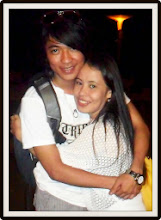
Mindanao is one of the three islands in the Philippines where there are good possibilities to explore the tropical rainforest. Still a big part of the original jungle is conserved here. For tourists seeking adventure Mindanao offers possibilities for jungle tracking and climbing the highest mountain of the Philippines. Visiting the second largest lake of the country is also possible. Visitors of the island who are interested in culture could make a daytrip to one of the mountain tribes.
Mindanao is the second largest island of the country. It is an interesting island in many respects.
Meet mountain tribes
There are still several indigenous people living on Mindanao. They are traditional in many respects.
Discover the daily life of the Mindanao people
In the rural areas you can meet the farmers and see their traditional ways of working on the fields. In the coastal areas you can visit the fishermen villages. On the beaches you sure will be able to see the way how young children are fishing with their nets.
Bangus,
the National Fish
Children try to catch a specific tiny 'baby' fish, the 'Bangus fry'.
They catch these Bangus fry to put them in ponds on the land, where the fry will grow up to the grownup National fish of the Philippines, the Bangus (milkfish).
Climbing the sacred mountain
Mount Apo is with 3144 meters above sea-level, the highest peak in the Philippines. The name makes that clear! 'Apo' means "grandfather of all mountains". For the indigenous people living in the mountain area, Mount Apo is considered sacred. The origin of the mountain is volcanic. It is an inactive volcano. No eruptions were ever recorded.
This huge mountain is attractive for nature lovers and sportive mountain climbers. Guided trips are organized by the Department of Tourism in Davao City. The attractions during this mountain tracking are plenty. You will get the feeling of being part of the environment during your walking trip through the forest and alongside the slopes of the mountain.
The Philippine Eagle
The mount Apo area is the last remaining territory of the Philippine Eagle in the country. On the island it is possible to make an excursion into the tropical rainforest to discover the Philippine eagle, the National Bird of the Philippines, which is known as the monkey eating eagle.
The indigenous people of Mindanao
There are more than 40 different ethnic groups in the Philippines.
Each group has a distinct culture and language. Several of these ethnic groups can be distinguished as "tribal groups". They are 'indigenous groups' who still live in a rather traditional way. Each group lives in a specific region on one of the islands. You can meat them in parts of Luzon, on some of the Visayas islands and on Mindanao.
The T'boli and B'laan, two indigenous groups
On Mindanao live 18 tribal Filipino groups. The most well known are the T'boli and the B'laan (or "Bla-an"). The other groups are the Ata, Bagobo, Banwaon, Bukidnon, Dibabawon, Higaunon, Kalagan, Mamanwa, Mandaya, Mangguwangan, Manobo, Mansaka, Subanen, Tagakaolo, Teduray and the Ubo.
Most characteristic of these 'indigenous groups' is that they live in a traditional way, comparable with how the ancestors lived centuries ago.
Lumad, the collective name
On Mindanao there are in total 18 indigenous groups. The collective name for the 18 indigenous groups on Mindanao is "Lumad". It is just another word for 'indigenous' .These ethnic groups distinguish themselves by their language and culture.
Old and new elements in their life
The cultural heritage is visible in their clothes and ornaments they wear. Housing, economic activities, cultural habits and often religion are all very traditional. Some groups learned to know tourism as a good alternative to earn extra money. In general however, the indigenous groups still live like in the past
The T'boli and their subsistence activities
The T'boli (pronounce "Tiboli") people live in the southern part of the province Cotabata, in the environment around lake Sebu, west of the city General Santos. It is estimated that are between 100000 and 150000 T'boli. The T'boli practice the primitive way of agriculture "slash and burn". "Slash and burn" means that the people will clear a part of the forest by cutting the big trees and burning the lower and smaller trees and bushes, after which they use the cleared plots as arable land for some years without any fertilization. Rice, cassava and yams are the most important agricultural products. Next to that, the people will go hunting or fishing for additional food.
Religion and culture
Only a few T'boli are Christian or Islamite. More than 95 percent of The T'boli people still has their animistic religion. They were hardly influenced by the spread of the Islam on the island. The Spaniards too, didn't succeed to Christianize the T'boli during the Spanish colonial period. Main reason was that the T'boli withdrew to the hinterlands in the uplands.
The T'boli and members of other indigenous tribes like the Higaunon, still believe in spirits who live on several places in the natural environment.
Tuesday, March 20, 2007
Mindanao
Subscribe to:
Post Comments (Atom)









0 comments:
Post a Comment